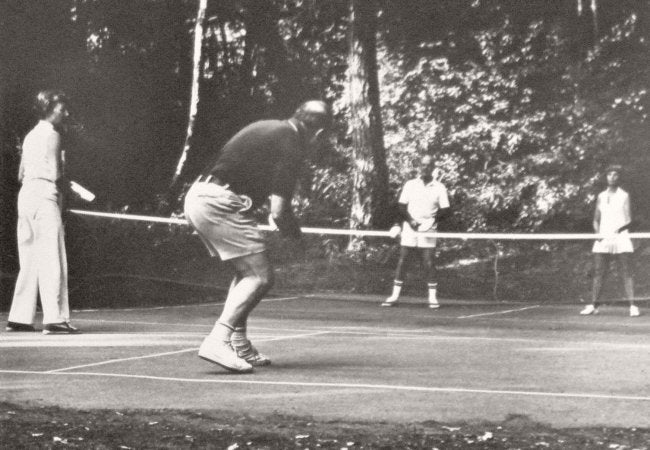Pickleball, the sport that blends the finesse of tennis, the strategic nuances of badminton, and the quick reflexes of ping pong, has emerged as a beloved pastime for millions worldwide. However, its origins are as intriguing as its gameplay. Join me as we embark on a historical voyage through the origins and evolution of Pickleball.
Inception: Our story begins on Bainbridge Island, Washington, in the summer of 1965. Joel Pritchard, a congressman, and Bill Bell, a businessman, found themselves in search of a way to entertain their families. With only badminton equipment at hand, they improvised a game using ping pong paddles and a plastic ball. Thus, Pickleball was born. Legend has it that the game was named after Pritchard's dog, Pickles, who had a habit of chasing after stray balls.
Early Development: Following its humble beginnings, Pickleball gained popularity within the Pritchard and Bell families and soon spread to their friends and neighbors. The sport's simplicity, accessibility, and engaging gameplay quickly attracted enthusiasts of all ages. It wasn't long before dedicated courts began popping up across the country, fueling the sport's rapid growth.
Formalization and Expansion: In 1972, the first rulebook for Pickleball was published, laying the groundwork for standardization and formalization. This development allowed Pickleball to transition from a backyard pastime to a structured sport with organized competitions. The United States Pickleball Association (USAPA) was founded in 1984, further solidifying the sport's status and providing a platform for players to connect and compete.
Throughout the 1980s and 1990s, Pickleball continued to gain traction, particularly among older adults seeking a low-impact yet engaging physical activity. Retirement communities embraced the sport, leading to a surge in participation among seniors. However, Pickleball's appeal transcended age barriers, attracting players from diverse backgrounds and skill levels.
Global Reach: As Pickleball's popularity soared within the United States, its influence began to extend beyond its borders. International interest in the sport grew steadily, prompting the formation of Pickleball associations in various countries. Today, Pickleball boasts a global community of players spanning continents, with enthusiasts introducing the sport to new audiences and cultures worldwide.
Modern Renaissance: The 21st century witnessed a Pickleball renaissance, propelled by social media, grassroots initiatives, and a renewed focus on health and wellness. The sport's accessibility, inclusivity, and emphasis on fun have resonated with people of all ages, driving a surge in participation and infrastructure development.
Pickleball has evolved from its improvised roots into a highly organized and competitive sport, with professional tournaments, sponsorship deals, and dedicated athletes pushing the boundaries of skill and strategy. Despite its growth, Pickleball remains grounded in its community-oriented ethos, fostering camaraderie and sportsmanship among players.
Looking Ahead: As Pickleball continues to gain momentum, its future appears bright and promising. The sport's adaptive nature lends itself to innovation and evolution, paving the way for new techniques, equipment, and playing styles. With increased recognition from sporting organizations and media outlets, Pickleball is poised to captivate even larger audiences in the years to come.
In conclusion, the history of Pickleball is a testament to the power of creativity, camaraderie, and perseverance. What began as a simple backyard game has blossomed into a global phenomenon, captivating players of all ages and backgrounds. As we celebrate Pickleball's past achievements, let us also embrace the endless possibilities that lie ahead, ensuring that this beloved sport continues to thrive for generations to come.






Share:
The Rules of the Game
The Birth of a Sport: The Inspiring Story Behind Pickleball's Invention